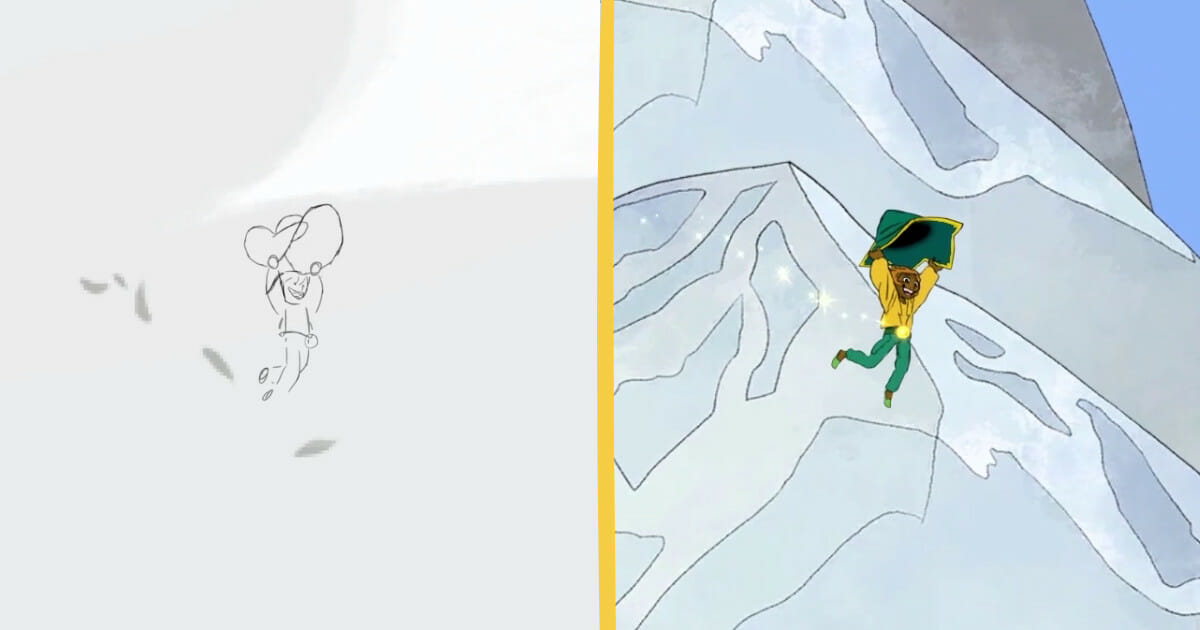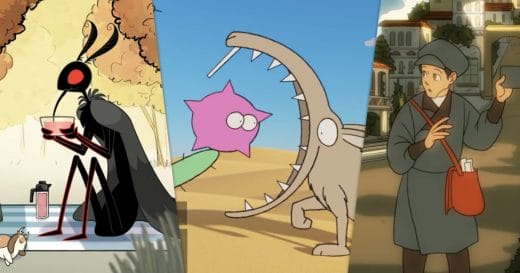
Spiritfarer is a unique game that asks players to look on the lighter side of life’s great inevitability: death. Playing as a girl named Stella, your job is to guide spirits through to the afterlife. You hear their stories and absorb their life’s lessons along the way — all aboard a great ocean-faring ship, of which you are in charge.
Inspired by a mixture of Ghibli’s Spirited Away, Greek mythology, and hotel management titles like Stardew Valley, creators Thunder Lotus Games developed a fun and fantastical title that resonates with fans of character-focused indie games. Mixing resource management mechanics with scrolling platform action and absorbing mini-games, Spiritfarer looks after players of all stripes.
We interviewed two members of the team to learn more about the animation that brings this magical gameplay to life. Animators Simon Nakauchi Pelletier and Alexandre Boyer ferried us through the experience of integrating animation from Toon Boom Harmony into an industry-standard video game engine like Unity. They describe some of the acute challenges animators need to overcome to create a game like Spiritfarer. They also share valuable insights around character moves, light and atmospheric effects, and how to make your animation work alongside game physics. Read below!
What sets Spiritfarer aside from other games?
We think the approach we took on the theme of death and grieving is what sets Spiritfarer apart from other games; Even our first two games at Thunder Lotus, which were also about death. Spiritfarer takes a more positive look at death: Acceptance, the concept of legacy, and what the people you meet in life leave behind when they actually have to leave this world.
Being a hotel management game, how did your animation help bring Spiritfarer to life?
In order to fulfill your daily management tasks in Spiritfarer, you have different interactions and many different places to travel to. Animation is one of the things that can bring in dynamism and make it exciting.
What ways does the animation help to drive Spiritfarer’s fun and engaging gameplay?
We always tried to give the animation as much expressivity as we could. It helps make the main character fun to control and gives the spirits believability and connection to their story.
The game is basically a management game, but also has a platforming aspect to it with various mini-games throughout the journey. We tried to have fun with the various elements and tried to have clear and entertaining animations.
How many different animations does a character like Stella have in total?
Stella has about 100 moves. The basic platforming is around 25 moves, counting transitions. The rest is mostly for mini-games, expressions for dialogues and a few custom animations used in specific moments of the game.
Did each Spirit have a unique set of animations?
For the majority they have the same basic set of animations: interacting, walking, eating, sleeping, hugging, etc., with a few exceptions. But the spirits you welcome on your boat represent a different person in real life. It was important to give them individuality in their movement.
What are the unique challenges for animating sequences within gameplay?
The hard part is that we want to make sure not to have sequences be too long without any player interactions. It could be tempting to take our time presenting a concept or a piece of story, but it’s better to try to keep that within the gameplay. Most of the time, once we have communicated what we want, we allow the player to cancel out of the animation and go into any action he or she wants.
Also, sprite-based 2D animation doesn’t allow for the kind of procedural blending that 3D animation allows. We must create a few transitions in order to smooth out changes between animation clips, depending on how jarring it would look without the transition and how important those clips are.
What draws Thunder Lotus to working in 2D animation?
Tastes are completely subjective. It’s great to see the game industry filled with so many different visual approaches, like 3D, pixel art, stop motion and all the distinct styles you can achieve within those approaches. For our own work, we really like the simplicity, directness and handmade feel of 2D animation. There’s still something magical about drawings that move and are alive.
Can you run us through the software used in the process?
We use Toon Boom Harmony for all our games. It works great for us in our mix of frame by frame and cut-out animation. For the game engine, we use Unity, which is the most common one amongst indie developers.
What was your studio’s process for bringing animated assets from Harmony to the Unity engine?
For our three first games, we used a plug-in called TK2D with which we packed our frames in sprite-sheets that Unity could read. On our new projects though, we moved to a system we’ve developed ourselves which is similar to TK2D in how it’s still about exporting images from Toon Boom Harmony and then packing it into big spritesheets. Our process is very classic in that sense, however we’ve started exporting some data from Harmony like z-depth order for the different layers and some movement data for attach points.
In a supernatural game such as Spiritfarer, how do you keep things physically believable?
The boat you travel on, some parts of the world you travel to, the appearance of the spirits or the actions of the main character are supernatural. But pretty much all the elements of nature, like water, fog, rain, wind, sunrise or sunset — what composes the scenery — is meant to give a sense of a dreamy, beautiful and nostalgic place, based on the memory of places in real life — within the game’s story.
We’ve also tried to mix the mundane with the fantasy. The main character spends a lot of time watering and harvesting crops, cooking, fishing; all activities that bring you back down to earth despite all the magical things happening around you.
The game is very bright, to keep the mood light. Was lighting an important part of achieving the look?
Yes. The way lighting is handled, and the balance between all the different elements, is crucial to get the right kind of mood. It should appeal to the player, so that they would want to stay in the game and go on to discover new places.
The art director, Jo Gauthier, and the design team were after a simple style, yet not too much. Somewhat soothing for the eye, with a flare of melancholic nostalgia to it.
This is the first game where we had a dedicated technical artist, David Bergamin. He really helped set beautiful lighting ambiances with dynamic effects directly in the game engine.
How did you capture the essence of the journey?
Being a side-scrolling 2D game where you stay relatively zoomed-in on the characters, this was a bit of a challenge. It was hard to capture the vastness of the water.
Again the lighting here was very important to give a sense of the time going by. Different kinds of moods for different places you travel to also help with that. For example: going through various meteorological events and obstacles.
Lastly, which animated sequence in Spiritfarer are you most proud of?
Probably the very last sequence between the two main characters. I won’t go into details to avoid spoilers, but they spend the whole game mostly taking care of others. This was an opportunity to have them just concentrate on the moment and how much they mean to each other. It was also the very last animation I made and it was a nice moment of closure for me too.
Ready to explore the world of Spiritfarer? You can learn more about this cozy management game about dying on Thunder Lotus’ website.


